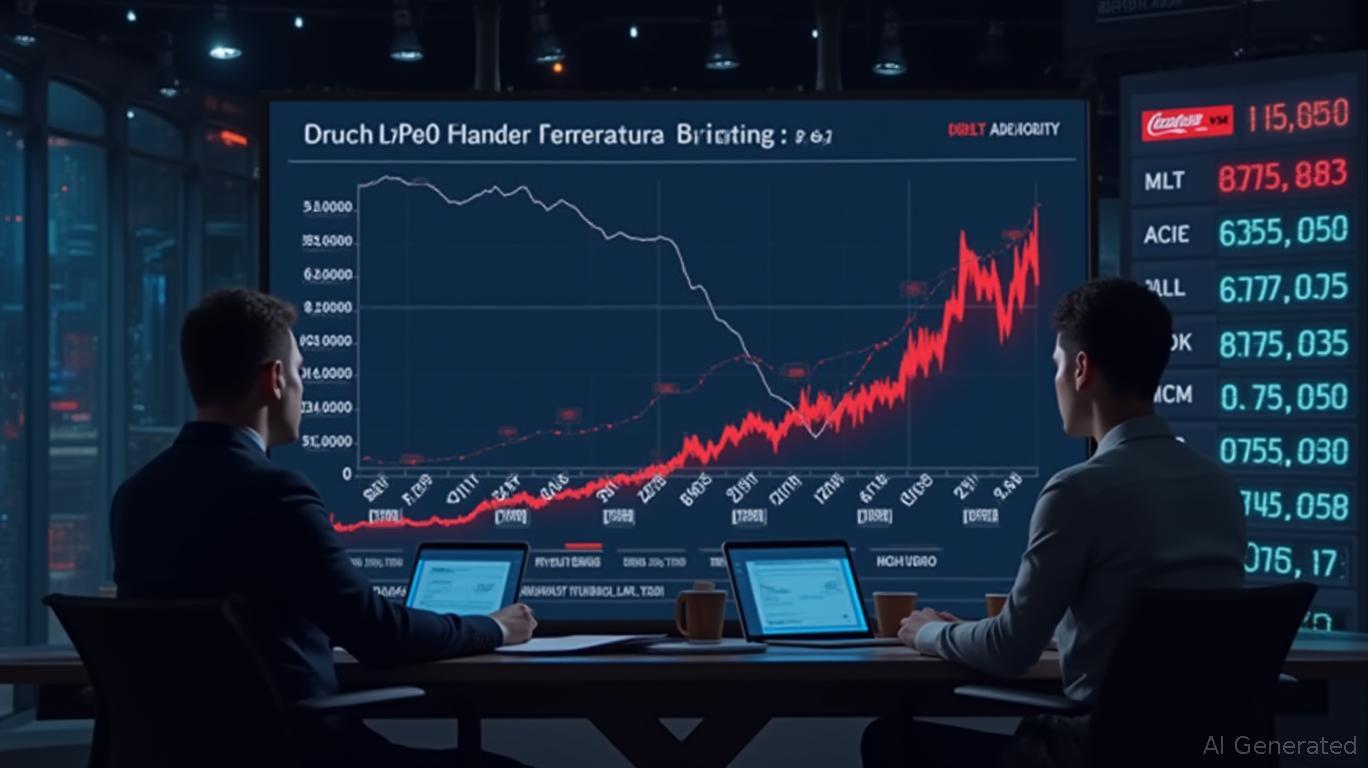Coca-Cola's Stock Outlook: A Case of Overvaluation in Uncertain Times
The Coca-Cola Company (KO) remains one of the most iconic consumer brands in the world, with a portfolio of products that dominate global beverage markets. Its ability to generate consistent cash flows and navigate economic cycles has long made it a favorite among income-focused investors. Yet beneath its glossy facade, troubling signs emerge when scrutinizing its valuation. Despite its enduring appeal, Coca-Cola's stock appears stretched compared to its historical norms and peers, raising red flags for new investors. In an era of economic uncertainty, the risk of mean reversion looms large—and the opportunity cost of buying KO now may outweigh its allure.
Valuation on Life Support: KO's Stretched Multiples

Coca-Cola's current valuation metrics paint a troubling picture. As of May 2025, its P/E ratio of 28.74 sits 8.45% above its five-year average of 26.50. While its P/E is still below its 10-year average of 35.89, the recent upward trend suggests investors are pricing in expectations that may not align with reality. Meanwhile, its P/S ratio of 6.63 is nearly triple that of PepsiCo (PEP) and far exceeds sector norms. For comparison, reveals a stark gap: KO's sales growth of just 2.2% annually over the past five years cannot justify this premium.
The PEG ratio—which accounts for growth—exposes the disconnect. At 2.95, KO's PEG suggests its high P/E isn't justified by earnings growth. In contrast, PepsiCo's PEG of 1.93 reflects better alignment between valuation and its 5.7% CAGR in EPS over the same period.
PepsiCo: The Undervalued Giant
While Coca-Cola's valuation has inflated, PepsiCo trades at a relative discount. Its P/E of 19.08 is 27% below its five-year average of 26.20, and its P/S ratio of 1.99 reflects stronger value relative to its 6.5% sales growth. Crucially, PepsiCo's free cash flow has grown at a 9% CAGR over five years, outpacing Coca-Cola's anemic 5% growth.
PepsiCo's diversified portfolio—spanning beverages, snacks, and healthier products—also positions it better for shifting consumer preferences. As health-conscious trends and economic caution reshape spending, PEP's broader offerings may prove more resilient.
The Risk of Mean Reversion
Investors often underestimate the power of valuation mean reversion. If Coca-Cola's P/E compresses back to its five-year average of 26.50, its stock price could decline by 7.8%, even if earnings remain flat. For new buyers, this risk is compounded by the company's stagnant earnings: KO's EPS has grown at just 0.3% annually over the past three years, despite share buybacks.
Meanwhile, the broader beverage sector faces headwinds. Rising input costs, inflation, and shifting consumer habits (e.g., the rise of plant-based beverages) could pressure margins. In such an environment, overvalued stocks like KO are especially vulnerable.
Why Wait for KO When PEP Offers Better Value?
The case for Coca-Cola hinges on its brand strength and dividend reliability. However, at current prices, the stock offers little margin of safety. With PepsiCo trading at a 31% discount to KO's P/E ratio, investors seeking exposure to the beverage sector can secure better terms elsewhere.
PepsiCo's dividend yield of 2.8% versus KO's 2.5% further underscores its value proposition. For income investors, PEP's combination of stronger valuation metrics, better growth, and comparable yield makes it a compelling alternative.
Conclusion: Proceed with Caution
Coca-Cola's stock has been a stalwart for decades, but its current valuation leaves little room for error. With multiples stretched beyond historical averages and growth metrics lagging peers, the company's shares are unlikely to deliver outsized returns in the coming year.
Investors would be wise to heed the warning signs. Instead of chasing KO's brand name, consider PepsiCo—a company offering superior valuation, diversified growth, and resilience in uncertain times. In an environment where every dollar counts, paying a premium for stagnation is a gamble best avoided.
Final Note: Before making any investment decision, consider consulting a financial advisor. Past performance does not guarantee future results.

Comments
No comments yet